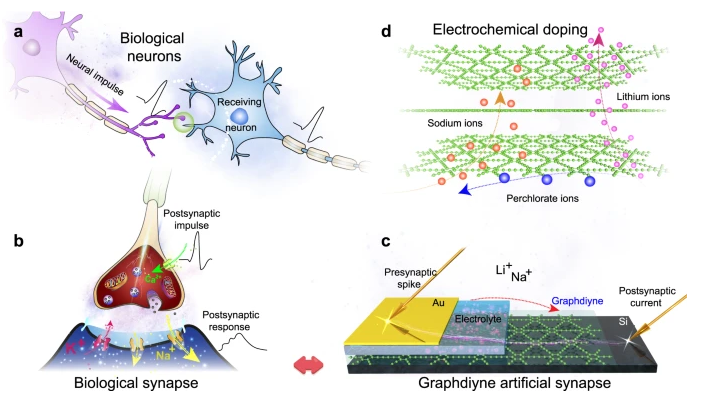
论文题目:Mimicking efferent nerves using a graphdiyne-based artificial synapse with multiple ion diffusion dynamics
论文作者:Huanhuan Wei, Rongchao Shi, Lin Sun, Haiyang Yu, Jiangdong Gong,
Chao Liu, Zhipeng Xu, Yao Ni, Jialiang Xu*, Wentao Xu

Abstract:
A graphdiyne-based artificial synapse (GAS), exhibiting intrinsic short-term plasticity, has been proposed to mimic biological signal transmission behavior. The impulse response of the GAS has been reduced to several millivolts with competitive femtowatt-level consumption, exceeding the biological level by orders of magnitude. Most importantly, the GAS is capable of parallelly processing signals transmitted from multiple pre-neurons and therefore realizing dynamic logic and spatiotemporal rules. It is also found that the GAS is thermally stable (at 353K) and environmentally stable (in a relative humidity up to 35%). Our artificial efferent nerve, connecting the GAS with artificial muscles, has been demonstrated to complete the information integration of pre-neurons and the information output of motor neurons, which is advantageous for coalescing multiple sensory feedbacks and reacting to events. Our synaptic element has potential applications in bioinspired peripheral nervous systems of soft electronics, neurorobotics, and biohybrid systems of brain-computer interfaces. Constructing artificial sensorimotor systems for robotic applications calls for development of synaptic connections for complicated information processing. Wei et al. propose a graphdiyne-based artificial synapse capable of parallel processing signals and utilize it in an artificial mechanoreceptor system.
